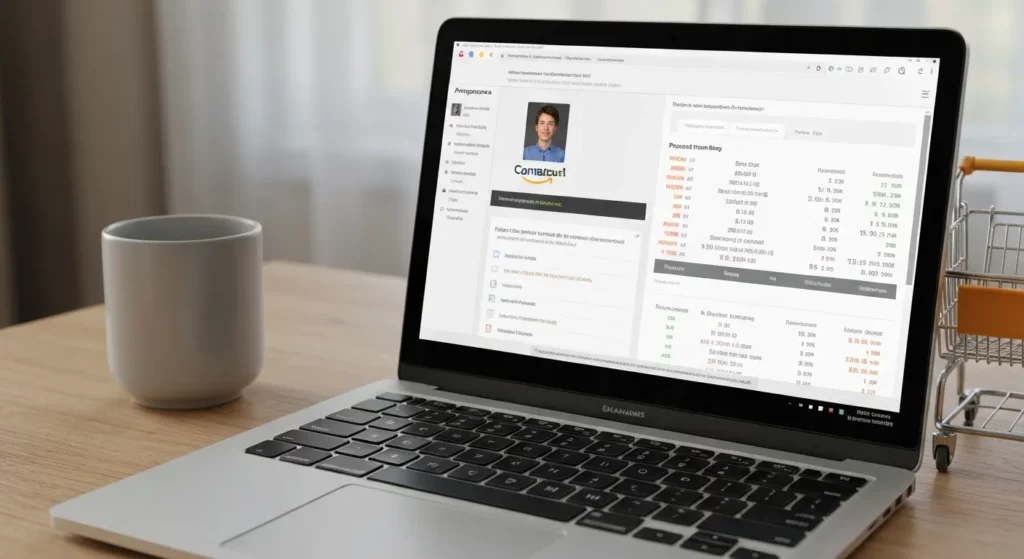I’ve always considered myself a careful man, especially with money. For forty years, I worked as a civil engineer, a job where precision and planning aren’t just valued; they’re required. You learn to measure twice and cut once. That mentality carried over into my personal life. My wife, Sarah, and I raised two kids, put them through college, and managed to build a comfortable nest egg for our retirement. I was the guy who clipped coupons, who always negotiated, who prided himself on finding the best deal.
Or so I thought.
My entire perspective on what it means to be a “smart shopper” was turned on its head by a single, seemingly innocent purchase: a fancy new coffee machine.
The Purchase That Started It All
It was a few years into my retirement. Life had settled into a comfortable rhythm. The mortgage was paid off, the kids were independent, and our days were our own. Sarah had developed a real passion for good coffee, the kind you read about in magazines. She’d spend mornings experimenting with different beans and brewing methods using our old, sputtering drip machine. Her birthday was coming up, and I decided to surprise her with a top-of-the-line espresso machine. It was an indulgence, to be sure, but she deserved it.
I did my research, read reviews, and settled on a sleek, chrome model from a well-known Italian brand. The list price was staggering—around $500. That was more than I was willing to spend. But I’m a patient man. I waited. Sure enough, a few weeks before her birthday, a big department store advertised a massive “Spring Sale.” And there it was, my target, with a bright red tag screaming: 40% OFF!
I did the math in my head. A $500 machine for about $300. It felt like a huge win. I drove to the store that afternoon, feeling a rush of adrenaline, the thrill of the hunt. I found the machine, confirmed the price, and proudly carried the heavy box to the checkout. The cashier congratulated me on the great deal. I walked out of that store feeling like the king of smart shopping. I had played the game and won.
When I gave it to Sarah, her face lit up. That alone made it worth every penny. But my feeling of pride, that sense of accomplishment, was about to come crashing down.
A Painful, Eye-Opening Conversation
About a month later, our neighbor, Tom, was over for a barbecue. He was admiring the new machine on our kitchen counter. “Oh, you got the Bellini 900,” he said. “Great choice. We bought one for our son for Christmas.”
“It’s fantastic,” I said, puffing my chest out a little. “And I got it for a steal. Forty percent off.”
Tom nodded, sipping his beer. “Nice. What did that run you? If you don’t mind me asking.”
I felt a little boastful. “Just over three hundred,” I said, waiting for the impressed reaction.
Instead, Tom looked puzzled. “Three hundred? Huh. I think we paid about two-fifty for my son’s back in December. And it wasn’t even on sale.”
I felt a cold knot form in my stomach. I tried to play it off. “Really? Maybe it was a different model?”
“Nope, same one,” he said, tapping the machine. “I remember because my wife and I debated it for weeks. Two forty-nine, ninety-nine. I remember the price exactly.”
The rest of the conversation is a blur. I was stunned. Embarrassed. I felt like a fool. My “great deal” wasn’t a deal at all. I had overpaid by fifty dollars, and Tom, who hadn’t even waited for a sale, had gotten a better price. The feeling of being duped was surprisingly strong. It wasn’t just about the fifty dollars; it was about the principle. All my life, I’d trusted those big, red “SALE” signs. I believed that a percentage off a “list price” was real savings. That afternoon, I realized it was all just a game, and I didn’t even know the rules.
My Journey into the World of Price History
That night, I couldn’t sleep. The engineer in me, the man who deals in facts and figures, was furious. I had made a decision based on incomplete data. The retailer had presented a narrative—this item is worth $500, but for you, today, it’s only $300—and I had accepted it without question. I decided then and there that this would never happen to me again.
I went to my computer and started digging. I didn’t even know what I was looking for at first. I typed in phrases like “real price of products,” “are sales fake,” and “how to find the best price.” After falling down a few rabbit holes, I stumbled upon a term I’d never encountered before: price history.
The concept was simple but revolutionary to me. It was the idea that you could see a timeline of a product’s price at a specific retailer. You could see every time it went up, every time it went down. You could see its highest price, its lowest price, and its average price over months or even years.
This was the missing piece of the puzzle. A “sale” is meaningless without context. A 40% discount from what? An artificially inflated price that the item has never actually sold for? That’s not a discount; it’s a marketing trick.
My first discovery was a browser extension that tracks prices on Amazon. I installed it, feeling a mix of skepticism and hope. I went back to the product page for the very coffee machine I had bought. And there it was, displayed right below the product pictures: a graph. A simple line graph that showed the price history of the machine over the last year.
My heart sank as I looked at it. The graph told a brutal story. The price had hovered around $260 for most of the year. It had briefly spiked to $499 a few times, usually for just a day or two, creating the “list price” that made my “sale” seem so impressive. My purchase price of $300 was, in fact, one of the higher prices it had sold for in the past six months. Tom’s price of $250 was the actual, normal, everyday price.
I felt a flush of anger, but it was quickly replaced by a sense of empowerment. I had found the tool. I had uncovered the truth. I now understood the game. The goal wasn’t to find a sale; the goal was to buy at the right point in the price cycle. I was determined to master this new approach to what I now called smart shopping.
Putting My New Knowledge to the Test: The Great TV Hunt
It wasn’t long before I had a chance to apply my new philosophy. The small television in our den, a relic from the early 2000s, was finally giving up the ghost. Sarah and I decided it was time for an upgrade. We wanted something bigger, a smart TV where we could easily access our streaming services.
The old me would have waited for the next big holiday sale—President’s Day or the Fourth of July—and bought whatever 55-inch TV had the biggest discount sticker on it. But the new me had a different plan.
First, I did my research, just like before. I read reviews on CNET and Consumer Reports, talked to my tech-savvy son, and we settled on a specific model from a reputable brand. Its list price at most major retailers was around $800.
But this time, I didn’t rush out to buy it. Instead, I began my surveillance. I used a few of the online tools to compare prices over time that I had discovered. Some were browser extensions, others were dedicated websites where I could paste the product link and set up an alert.
This became my new hobby. Every few days, I would check the price history charts for that TV across three different major retailers. It was fascinating. I watched as the price held steady at $799 for weeks. Then, for a weekend, one retailer dropped it to $749. The old me would have jumped on that. A $50 savings! But the price history chart showed me that six months earlier, it had briefly dropped to $650. That became my target.
I learned to recognize the retailers’ tactics. I saw how they would raise the “original price” to $900 right before a “sale” that brought it down to $799, making it look like a discount when it was really the standard price. I started to see the rhythm of retail. Prices would dip slightly after a holiday, not during it. They would drop more significantly when rumors of a new model started to circulate.
I set a price alert. I told the website: “Email me when the price of this TV drops below $675.” And then, I did the hardest part: I waited.
Sarah would sometimes ask, “Any luck on the TV?” and I’d say, “Not yet. I’m waiting for the right moment.” She trusted me. She knew I was on a mission.
Weeks turned into a couple of months. The den remained TV-less. We were fine; we had the main television in the living room. But the anticipation was building. Then, one Tuesday morning, I opened my email and there it was. An alert. The TV had dropped to $649.99 at one of the retailers.
I quickly opened the price history chart. This was it. It was the lowest price it had been in over a year. I didn’t hesitate. I calmly clicked the link, added the TV to my cart, and completed the purchase online. There was no rush of adrenaline this time, no thrill of the chase. Instead, there was a deep, quiet satisfaction. It was the feeling of a plan perfectly executed. I had saved $150 off the normal price, and more importantly, I knew for a fact it was a genuine deal. I hadn’t been tricked or manipulated. I had made an informed decision using data.
The feeling of bringing that TV home was ten times better than the coffee machine. It represented a new chapter in how I managed our finances. It was proof that patience and knowledge were far more powerful than any “50% OFF” sticker.
A New Philosophy for Life and Finances
That experience with the TV solidified my new rule: I never shop for anything significant without first checking the price history.
This philosophy has permeated every aspect of my purchasing life. It’s not just for big-ticket electronics. Last spring, I wanted to buy a new gas grill. I found the one I wanted, tracked it for two months, and discovered that the price of grills reliably plummets in late August and September. I waited, and I saved nearly 35% compared to the peak spring price.
I did the same for a new set of luggage for a trip Sarah and I were planning. The same for a power washer for the back deck. Each time, the process is the same: identify the product, track its price history, set a target price based on historical data, and wait patiently for the right moment to buy.
This approach has had a profound impact on us, especially living on a more fixed income in retirement. The savings add up. A hundred dollars here, two hundred there—it makes a real difference over the course of a year. That’s money we can put toward a trip to see our grandchildren, or into our investment portfolio, or simply keep as a cushion for unexpected expenses.
But the biggest change has been emotional. I no longer feel like a pawn in the retailers’ games. I feel in control. Shopping used to be a reactive activity; I’d see an ad and react to it. Now, it’s a proactive, strategic process. I decide what I want to buy and what I’m willing to pay for it, based on its true market value over time.
It has eliminated buyer’s remorse. I never have that sinking feeling of seeing something I just bought go on sale for a lower price a week later. Because I’ve studied the price history, I know when I’m buying at or near the bottom of a price cycle. There is a profound peace of mind that comes with that certainty.
My Simple Guide on How to Check Product Price History
Over the years, I’ve shared this story with my kids, my friends, and anyone who will listen. They’re often amazed at how simple it is. Many people think this kind of diligence is too complicated or time-consuming, but it’s really not. My journey taught me that a few minutes of research can save hundreds of dollars and a lot of frustration.
If you’re tired of wondering if you’re getting a real deal, here is the simple process I follow, the one I learned through my own trial and error. This is my personal method to avoid inflated retail prices.
First, I start with browser extensions. These are small, free add-ons for your internet browser like Chrome or Firefox. The ones I use automatically show a price history graph right on the product page of major sites like Amazon, Target, or Best Buy. Seeing that visual chart is the most powerful first step. It immediately gives you the context you need.
Second, for items I’m serious about, I use dedicated price-tracking websites. You can find them with a quick search for “price tracker” or “price history tool.” On these sites, you can copy and paste the URL of the product you want. The site will then show you its price history across multiple stores, which is incredibly useful. This is how I found the best deal on my TV, as one retailer had a much lower price than the others.
Third, and this is the most crucial part, I set a price alert. All these tools allow you to enter your email and a target price. When the product hits that price, you get a notification. This is the key to removing emotion and impulse from the equation. It automates the process of “waiting for the right moment.” You set it, and you forget it, until that wonderful email arrives.
It does require a little bit of patience. We live in a world of instant gratification, and waiting can be hard. But my experience has taught me that a few weeks of patience can be richly rewarded. It’s about shifting your mindset from “I want it now” to “I want it at the right price.”
More Than Just Saving Money
Looking back, I’m almost grateful for that embarrassing coffee machine incident. It was a wake-up call. It taught me that in today’s world, being a truly smart shopper isn’t about chasing sales; it’s about understanding data. Retailers have massive teams of people and powerful algorithms dedicated to one thing: getting us to spend as much money as possible. Checking the price history is like having your own personal data analyst fighting on your side.
For me, this practice is about more than just the money. It’s a form of respect—respect for the work Sarah and I did for decades to earn our savings. Every dollar we saved by being patient and informed is a dollar that honors that lifetime of effort. It feels responsible. It feels prudent. It feels, in the truest sense of the word, smart.
So now, when I walk through a store and see those big, bright “SALE” signs, I don’t feel the same pull. I just smile to myself. I know that the real story isn’t on that sign. The real story is in the data, in the history, and in the quiet confidence of knowing exactly what something is worth. And that is why I will never, ever make a purchase without checking the price history first.














